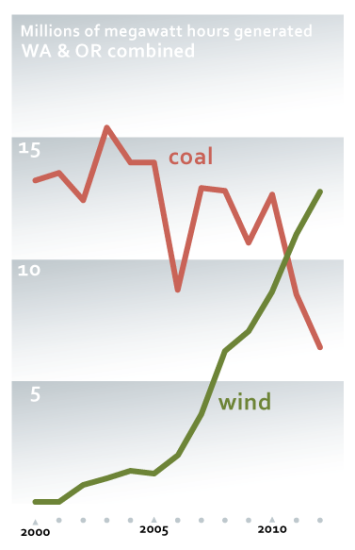Good news from the Energy Information Administration’s latest electricity update: in Washington and Oregon, generation of coal-fired power fell sharply over the past two years, even as wind has taken flight. By the end of 2012, wind handily outstripped coal in the two states’ generation mix:
This makes me happy—but probably requires at least two pieces of context.
First, there’s a chance that coal generation could have fallen even further, except that the coal-fired power plant in Centralia, Washington has long-term contracts that will likely keep at least one of the plant’s two boilers humming until 2025. There’s an irony here: if it weren’t for an agreement between the Washington Department of Ecology and Centralia’s owner to shut down the plant’s coal burners by 2025—an agreement that also allowed Centralia’s coal generators to enter into long-term power contracts, which previously had been forbidden—the plant might actually have been on track to close much sooner!
And second, the West Coast is unique in its generation mix: it’s the only part of the country in which wind power outstrips coal, and that’s largely because of the abundance of hydropower. Nationally, coal power is on the decline—but still provides more than ten times as much total electricity as wind does.
Still, this is good news for the Northwest—and I’ll take my good news where I can get it!
Chart by GoodMeasures.biz.


Comments are closed.